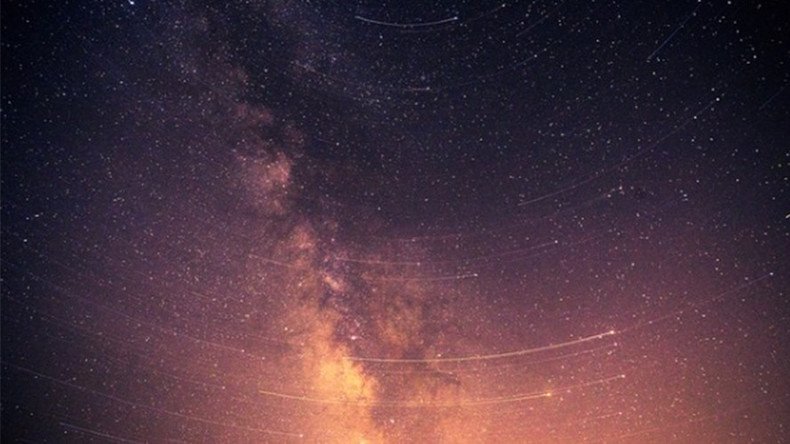Out of this world: All you need to know about the Lyrid meteor shower

The annual Lyrid meteor shower will streak across our skies Friday – and this year's show is expected to be truly spectacular.
Taking place just days before the new moon, the dark skies will provide ideal conditions for stargazers who can expect to see up to 20 'shooting stars' an hour from Friday night into the early hours of Saturday morning.
The Lyrid shower occurs between April 16 and April 25 each year, but is predicted to peak after midnight on April 22, with the greatest number expected to fall in the hours before dawn.
The event is best seen from the northern hemisphere but those in the southern hemisphere can still enjoy the show, just with fewer meteors.
READ MORE: Jupiter close-up: Juno snaps stunning image of planet’s swirling clouds (PHOTO)
Prospective Lyrid watchers should also position themselves in a dim area, away from streetlights or brightly-lit buildings, with an unobstructed view of the sky, such as at a park or beach.
The spectacle happens when the Earth moves into the path of dust particles left in the wake of Comet Thatcher, which orbits the sun once every 415 years. The dust then burns up in the Earth's atmosphere and disintegrates as streaks of light in the sky.
READ MORE: 2017’s ‘Pink Moon’: Here’s what it means
Lyrid fireballs can become extremely bright as they enter the Earth’s atmosphere, sometimes lighting up the entire night sky for a few seconds.
The Lyrid meteor shower will be visible for much of the nation as it reaches its peak on Friday night: https://t.co/QxMUTtVSS1pic.twitter.com/I9Z0ZnsN3t
— AccuWeather (@breakingweather) April 19, 2017
This is the second meteor shower this year and is expected to be the most eye-catching – that is until the Orionid shower in late October.












